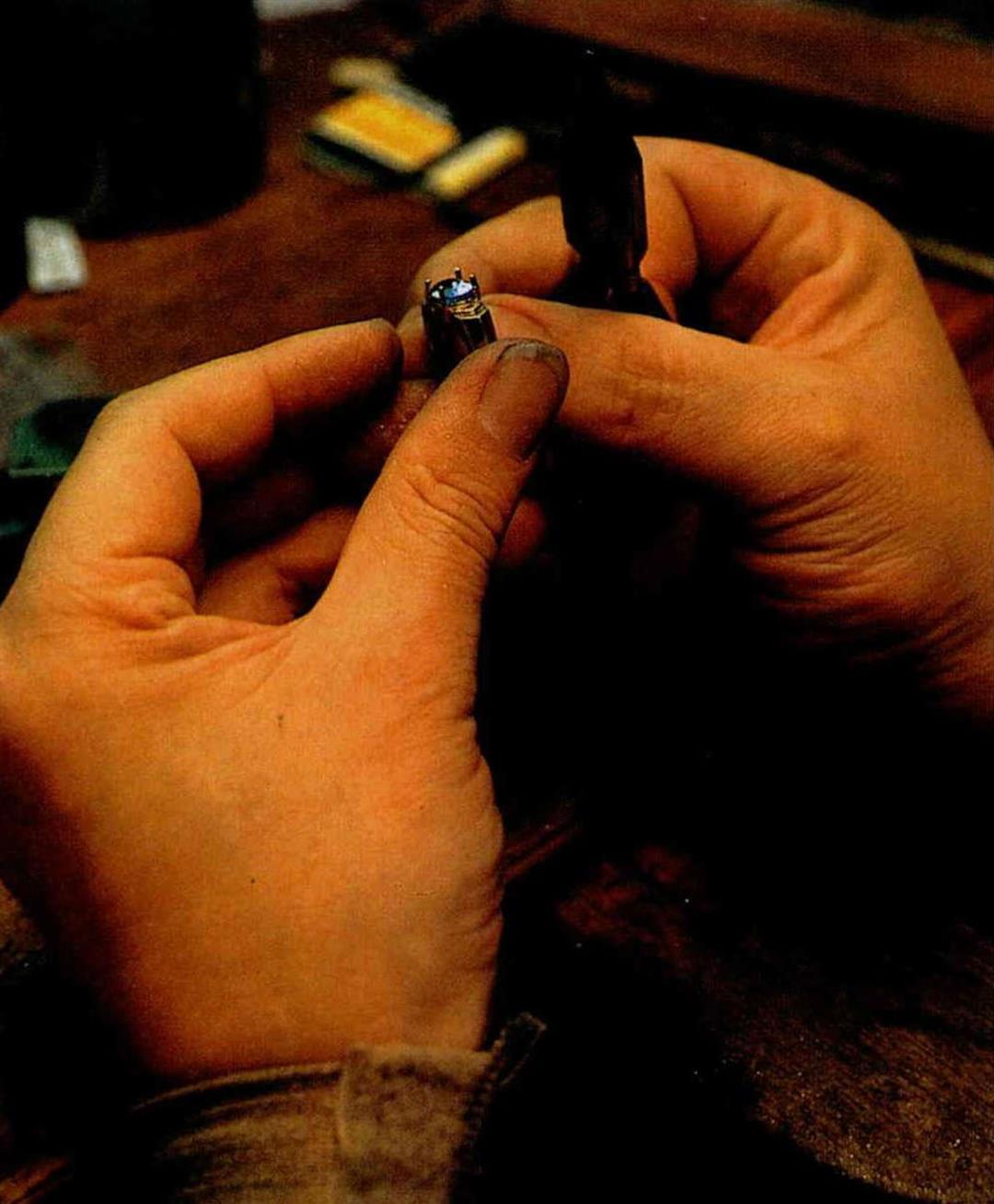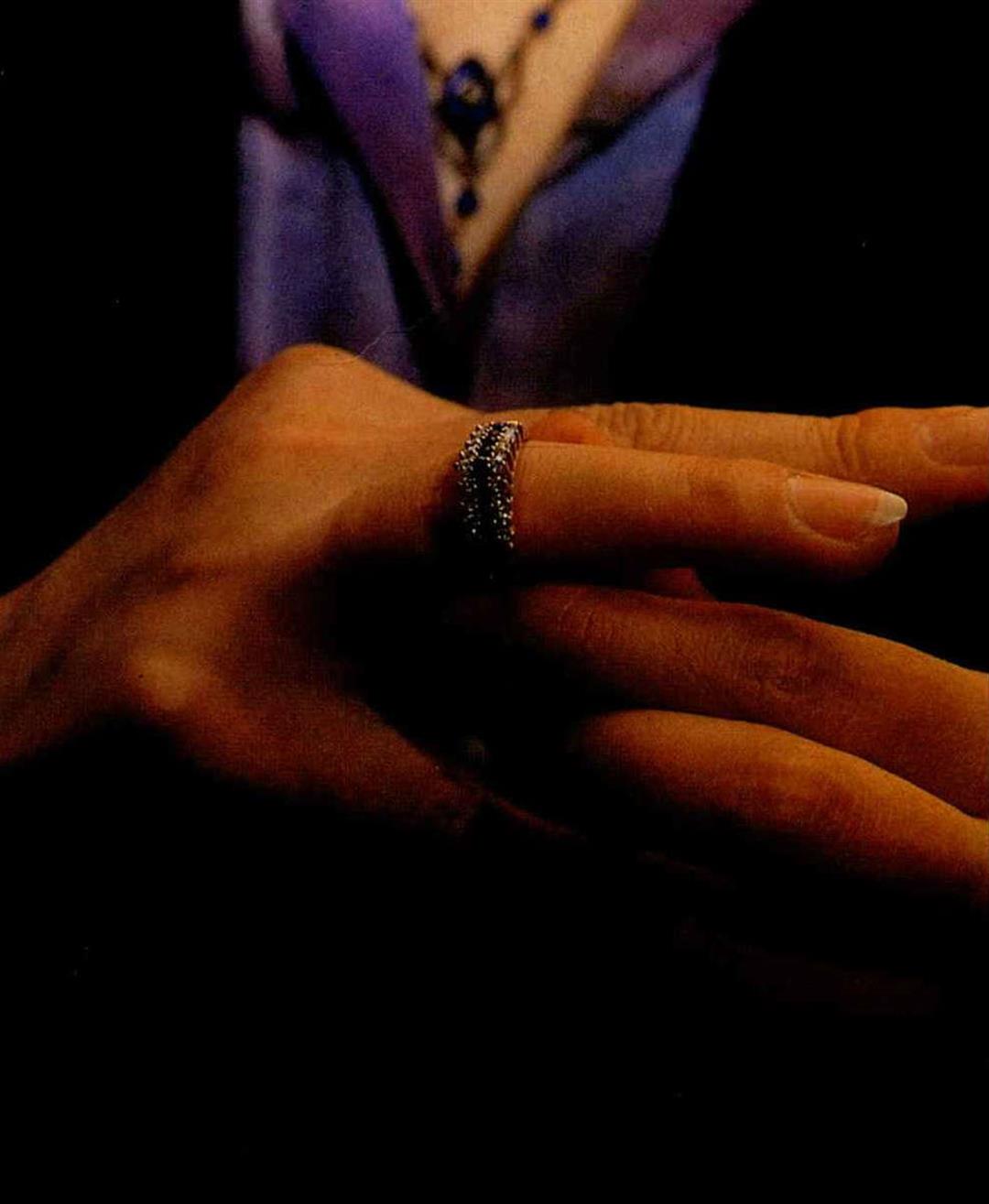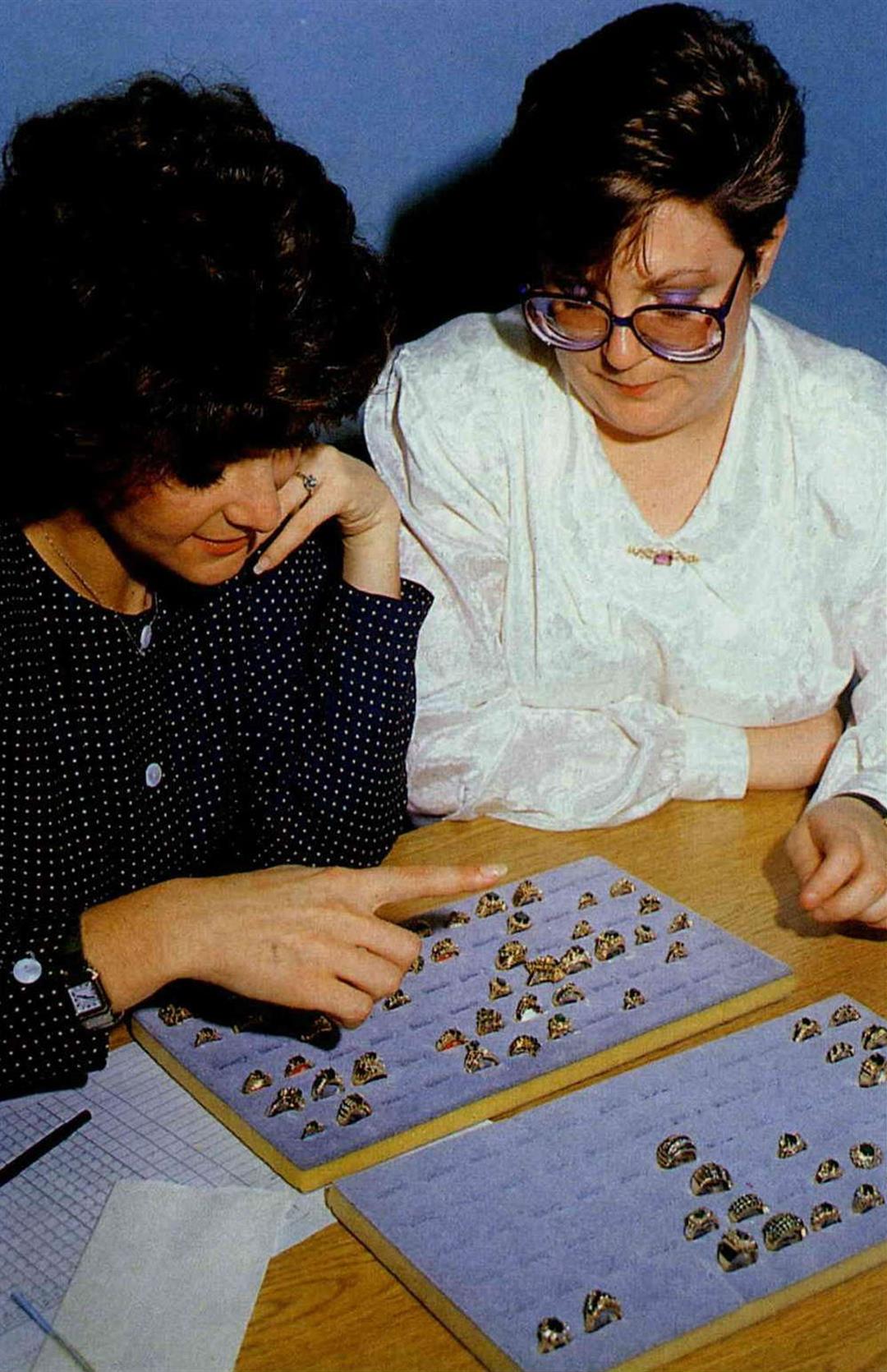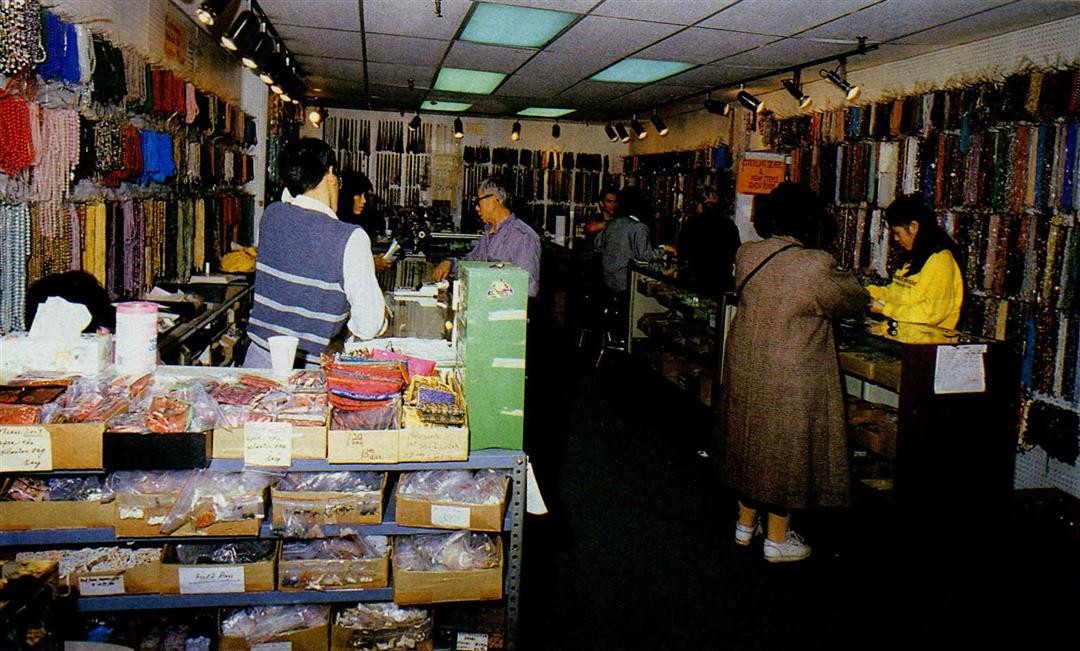America is known as the "melting pot", made up of immigrants. Each new wave of immigrants often finds itself concentrated in specific kinds of jobs. Right now in New York, for example, newspaper vendors in the subways are mostly from India; laundries are the realms of Chinese; the jewelry business is mostly Jewish.
Jewels! Glittering, glamorous jewels. There are several types. Precious stones include the most expensive, pure, natural jewels; semi-precious stones, including agate, cat's eye, and amethyst, are priced in the middle; man-made jewels are least expensive. Dealers in precious stones are mostly Jewish; Chinese have focused mostly on semiprecious gems.
Over the last ten years, New York's China town has changed--jewelry shops have become the rage. And over on Broadway and 27th, and along 35th and 36th, there have congregated several hundred jewelry makers, wholesalers, and retailers run by people of Chinese descent.
This year they organized the "New York Association of Chinese Jewelry Merchants"; the group already has over 100 members. Director Su Hsieh-min says that semi-precious gems are one of the easiest lines to get into--it requires relatively little capital and organization, and you don't need warehouse space. At the same time, profits are good.
The increasing involvement of Chinese in the jewelry business in New York is closely connected to changes in the world jewelry business.
Fifteen years ago, processing of semiprecious stones was mostly in Italy and West Germany. Ten years ago, relying on cheap but skilled labor, Hong Kong took the lead. Taiwan soon followed suit and is now a leading exporter of processed semi-precious gems. A lot of dealers in New York are related to those in Taiwan. The fact that the sources of the jewelry are Chinese increases confidence that the buyer can get a better deal from Chinese dealers in New York, explains Su.
According to Su, 60 percent of the market is in Chinese hands; it could be said that they created this market. Wholesaler Chen Tzu Wei-chieh says that "Ten years ago, a Tiger's Eye necklace cost 400 U.S. dollars; we brought in new machines for mass production, now they cost only a few tens of dollars." In this way, Chinese have enlarged the "pie". Other Chinese, like Luo Kai-ying of Hong Kong, have contributed creative new designs.
Su Hsieh-min and his wife were the first to bring semi-precious gems to department stores. Twelve years ago, when they had not yet left Hong Kong, they believed that semi-precious stones--middling in price but high in sentimental value--could sell well at department stores. They began to promote Mrs. Su's designs at such locales, got the support of Saks Fifth Avenue, and soon business boomed. Currently their products sold through department stores account for one-fourth of the U.S. market in semi-precious stones, and products marketed under their own label "Mona So" are number one in the same market.
Another reason for the success of Chinese jewelers is innovation. Mrs. Chen, who wholesales materials, picked up unusual materials from every corner of the globe, including shells, bones, glass, feathers, and metals. Her competitors are often amazed and ask how is it that they have not chanced upon such materials. Chen says laughing, "You haven't run around enough!"
Besides hard work, style is also crucial. For most Chinese businessmen the idea is to keep prices low to stay competitive. But not in the States. There stores look at sale-ability first, price second. Products must be of high quality, well-designed, and come with good after-sales service.
Su stresses that their company places considerable importance on education--teaching the salespeople the names, origins, and rationales behind using different jewels. "Making a very simple object high class is the only way to the customer's heart," Mrs. Su says.
Good design is even more important. Hsia Kang-sheng sold over 100,000 new style rings in three years. At first they followed the prevailing trends; now, supported by advertising budgets, "When we want a style to be popular, then it becomes popular," says Mrs. Hsia confidently.
Not everything is so easy, mind you. Several years ago Mr. Hsia had all his casting molds stolen by his close friend; only by devoting everything to new products has he achieved a steady position. Jewelers also face competition from former assistants who, in the Chinese tradition, have struck out on their own after learning the trade. Mrs. Chen says that because in the last few years the jewelry business of Chinese has grown quite large, others have become covetous. With the greedy have come con artists, thieves, forgers, and other nemeses of jewelers everywhere.
"In the United States insurance is extremely expensive. Security is really our biggest headache," says Su Hsieh-min. To help solve this problem, the U.S. Association of Chinese Jewelry Merchants was formed as a nonprofit body. It is hoped that its collective strength can be used to demand police protection and to apply to the government for subsidies for minorities; a legal advisor has been hired to help with tax problems. The group even provides information to Chinese trying to get into the business.
It seems that the old adage "Chinese are like a plate of loose sand" doesn't quite hold in New York's jewelry business.
[Picture Caption]
The prices of beautiful earrings and necklaces made with semi-precious stones are much lower than those with precious jewels and have found a ready market.
This ring made with semi-precious stones has sold more than one million copies.
The jeweler only needs a few boxes to be able to put his complete wares before the buyer.
The jewelry industry has generated a lot of jobs for Chinese.
Besides laundries and restaurants, New York's Chinatown is now home to many jewelry shops.

The prices of beautiful earrings and necklaces made with semi-precious stones are much lower than those with precious jewels and have found a ready market.

This ring made with semi-precious stones has sold more than one million copies.

The jeweler only needs a few boxes to be able to put his complete wares before the buyer.

The jewelry industry has generated a lot of jobs for Chinese.

Besides laundries and restaurants, New York's Chinatown is now home to many jewelry shops.